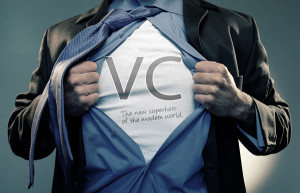 A recent article on Investor Place talks about how venture capital revolutionized business in the United States. The article goes on to discuss the history of venture capital. The beginnings of the practice are said to have started back in the 1970s where tech gurus like Tom Perkins and Don Valentine saw major advantages to providing capital for startup companies.
A recent article on Investor Place talks about how venture capital revolutionized business in the United States. The article goes on to discuss the history of venture capital. The beginnings of the practice are said to have started back in the 1970s where tech gurus like Tom Perkins and Don Valentine saw major advantages to providing capital for startup companies.
Before venture capital, angel investing was the method in where startups acquired capital. Angel investing differs in venture capital in that angel investing is where rich investors would pay from $50,000 to $100,000 per deal. Venture capital is the collaboration to raise millions of dollars from institutional investors, or limited partners, and then loan that money to startups.
The rich entrepreneurs engaging in angle investing were weary of this practice at first, so firms like Kleiner and Sequoia had to find out a way to get these entrepreneurs on board. These firms decided to create companies themselves to show entrepreneurs the advantage of engaging in venture capital. Kleiner started a company called Genentech, which ended up exploding due to venture capital.
Venture capital was then seen as an easier way to scale companies. General partners at venture capital firms would earn 2% of the assets under management of any company that they were able to gain investments for. There was also a salary bonus of 20% of the profits as incentive.
Since venture capitalists have such a stake in the company that they invest in, they typically involve themselves in that company’s business development. This is another attractive quality to venture capital. The partners investing in the company will often have entrepreneurial experience; so helping a startup through various phases of business development is beneficial for everyone involved. Venture capitalists are also generally well connected which is essential in developing a business. With this being said, venture capital firms almost act as a startup factory. They not only throw money at the company, but they are engaged in the building process of the business.
No wonder the United States has had such success in the emerging startup industry. They have not only had the money behind each company that investors decided had potential, but they have also been guided through each phase of the business development process by experienced entrepreneurs. The teachers teach the students, the students learn, and eventually the student becomes the teacher. This is the model behind venture capital.
This article is based off of this article from investor place.